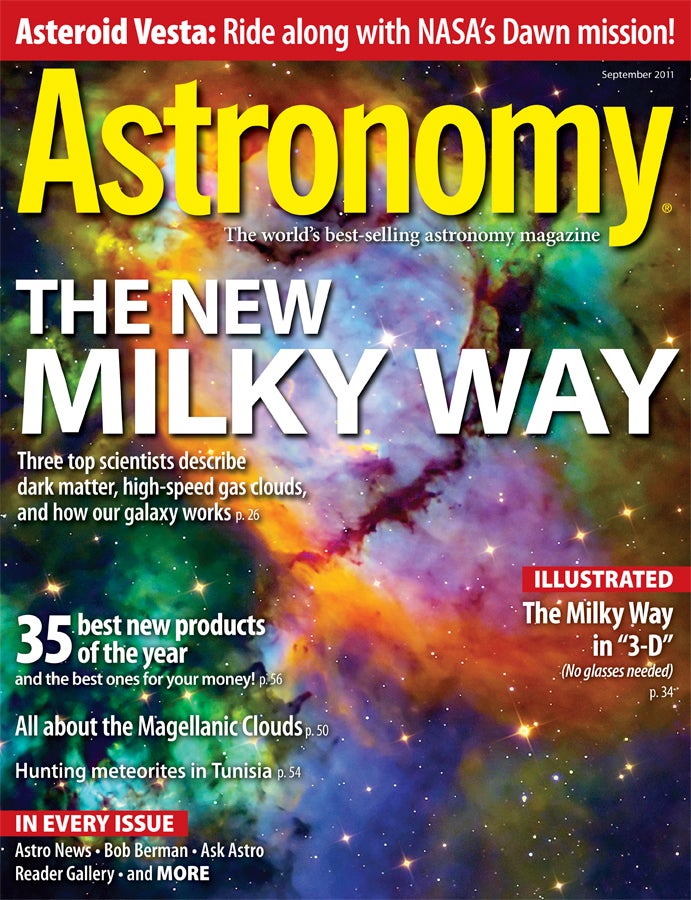
WAUKESHA, Wis. — In 1610, Italian astronomer Galileo Galilei trained a primitive telescope on the Milky Way arching across the night sky and discovered it consisted of myriad faint stars. Since that moment, scientists have been on a quest to understand our galaxy’s structure and evolution, and the discoveries have gained momentum in the past few decades.“The new Milky Way” by astronomers John S. Gallagher III, Rosemary Wyse, and Robert Benjamin explores the recent findings that are shaping our views of the Milky Way — a dark matter halo, high-speed gas clouds, a central bar, and more. Although such research is at times difficult because of Earth’s position within the galaxy’s mid-plane, it also has its advantages. “[The Milky Way] is the only system we can fully map in three dimensions,” the authors write. “It also represents the only one where we can study the properties of individual stars in detail.”
A combination of leaps in observational capabilities, improved theoretical models, and sharper comparisons with other galaxies are finally bringing the nature of the Milky Way into focus. To get the full picture of our galaxy, pick up the September issue of Astronomy, on newsstands August 2.
“Astronomy’s second annual Star Products”
Can’t decide on your next astronomy equipment purchase? Look no further than “Astronomy’s second annual Star Products.” In this special equipment review section, Contributing Editor Phi Harrington guides you through 35 of the most innovative astronomy gadgets and gizmos on the market today. “
Dawn of a new era”
On July 16, the asteroid Vesta gained an artificial satellite when its gravity captured NASA’s Dawn spacecraft — the first probe to enter orbit around an object in the main asteroid belt between Mars and Jupiter. Dawn will study Vesta for a year, providing unprecedented data to help scientists understand the earliest chapter of our solar system. In “Dawn of a new era,” Senior Editor Richard Talcott details the nuts and bolts of the mission and explains what scientists hope to learn from this ancient body.
“All about the Magellanic Clouds”
The Large and Small Magellanic Clouds are familiar targets for Southern Hemisphere observers. But these irregular star systems are more than just beacons in the night — they help astronomers understand galaxy dynamics. In “All about the Magellanic Clouds,” author Raymond Shubinski explores the Milky Way’s nearest neighbors and explains what attracts both observers and scientists alike.
September sky events visible without optical aid
- September 3 — At greatest western elongation, Mercury shines at magnitude –0.3 about one binocular field of view above 1st-magnitude Regulus
- September 25 — At opposition, magnitude 5.8 Uranus is a nice naked-eye object in the constellation Pisces the Fish.
Also in the September 2011 Astronomy
- “The Milky Way: The view from inside” — Seeing our galaxy from a spot in one of its spiral arms is as hard as seeing the forest for the trees.
- “Hunting meteorites in Tunisia” — Astronomy readers, Editor David J. Eicher, and planetary scientist Christopher McKay journeyed to North Africa to find pieces of the asteroid Vesta.
- “The Sky this Month” — Exclusive pullout star charts will guide you through September’s night sky.
- The September issue of Astronomy also includes Astro News, Bob Berman’s Strange Universe, Glenn Chaple’s Observing Basics, David H. Levy’s Evening Stars, Stephen James O’Meara’s Secret Sky, Tony Hallas’ Imaging the Cosmos, Ask Astro, Beautiful Universe, Deep-sky Showcase, New Products, and Reader Gallery.









